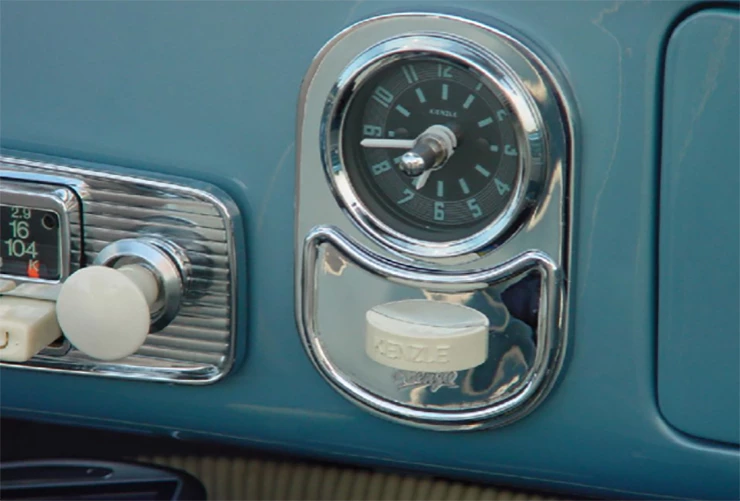Advanced manufacturing technologies such as 3D printing and CNC machining are changing the game for automotive restoration, as they enable vintage car enthusiasts, automotive manufacturers and rapid prototyping companies to reproduce rare or obsolete parts using reverse engineering and in one-off or small-batch runs.
As one would imagine, the farther back you go, the harder it becomes to source antique vehicle parts, which—without stringent preservation—succumb to rust, decay and wear and tear. Thankfully, technologies like additive manufacturing, 3D scanning, and CNC machining are creating new avenues for reproducing these parts and bringing vintage cars back to working status.
A perfect example of this comes from Siemens Industrial Turbomachinery Ltd in Lincoln, England, an engineering company that has links to historic engine manufacturer Ruston & Hornsby. Last year, the company paid homage to its heritage by restoring a hundred-year-old vehicle, the Ruston Hornsby motor car.
Rewind to 1918
101 years ago, a merger took place between Ruston, Proctor & Co and Richard Hornsby & Sons of Grantham, forming the company Ruston & Hornsby Limited. The new company, which was seeking to expand its business and diversify after World War I, came onto the scene with a stunning new product, the Ruston Hornsby motor car. The vehicle combined the company’s expertise in wood-framed aircraft construction as well as its knowledge of high-powered engines.
In 1920, two versions of the Ruston Hornsby motor car became available to the growing market of automotive consumers: one with 15.9 hp and a Dorman 2614 cc engine and one with 20 hp and a 3308 cc engine custom made by the company.
Ultimately, however, the Ruston Hornsby motor car had a short production run: only about 1500 cars were sold by 1925 when production ended. The vehicle model’s short success in the market was not due to its quality. Rather, the heavy-duty car was expensive to produce (between £440 and £1000 (the equivalent of roughly £20,000 today) and was less viable to produce than lighter and cheaper car models that made use of mass production techniques.
The legacy continues
Still, the legacy of the Ruston Hornsby has lived on until today, and Siemens Turbomachinery Ltd has brought the century-old car back to its former glory thanks to a combination of advanced manufacturing methods.
The automotive restoration project began years ago. In fact, Siemens acquired two Ruston Hornsby models in the 1960s, which have been gradually being restored at its facility in Lincoln by apprentices and volunteers.
Over the years, the Ruston Hornsby vehicles were brought back up to decent condition using mainly traditional restoration methods. For example, the cars’ engines and main under-the-hood components were fixed up using conventional automotive restoration techniques. Still, many smaller parts, critical to the vehicles’ operation, which had broken, decayed or been lost over time, were trickier to restore and replace.
To make things even more complicated, much of the Ruston Hornsby manufacturing information had been lost since the 1920s and some components had gone the way of the dinosaur.
The vehicle’ steering box, for example, was severely damaged and the original design of the part was lost. Thankfully, the skilled team at Siemens Turbomachinery was able to use state-of-the-art production methods to reverse engineer the broken part and create it anew.
The team utilized 3D scanning technology to capture the broken parts of the steering box and convert them into digital 3D models. A team from Siemens Materials Solutions was then tasked with reassembling the digital pieces to create a whole part, resembling the original steering box. The part was then converted into a 3D printable model and sent to a metal 3D printer, where it was produced in a single, completed piece.
By using advanced manufacturing processes such as 3D scanning and additive manufacturing, the automotive restoration project was able to create the steering box component in roughly five days. Comparatively, if the team had relied on more conventional techniques of searching for the part of designing it from scratch, it could have taken upwards of two years to complete.
Ruston Hornsby rides again

Overall, 3D printing made the automotive restoration project viable, as it enabled the company to bring to life a 100-year-old car part that would otherwise have been too costly and complicated to reproduce. The beauty of advanced manufacturing in a restoration context is that it is possible to manufacture one-off parts and to quickly iterate designs, ensuring that the final part meets all requirements.
Today, the restored Ruston Hornsby motor car is not just a visually enticing vintage car: thanks to engineering resources, 3D printing and a lot of dedicated talent, the century-old car can actually ride. Sometimes—and especially in this case—innovation is not about moving forward, it’s actually about reaching back into the past.
The impressive restoration project undertaken by Siemens Turbomachinery Ltd marks the first story in RapidDirect’s automotive restoration series. The new blog series will highlight some of the hottest automotive restoration projects in recent years—ones that have relied on advanced manufacturing technologies and processes.


